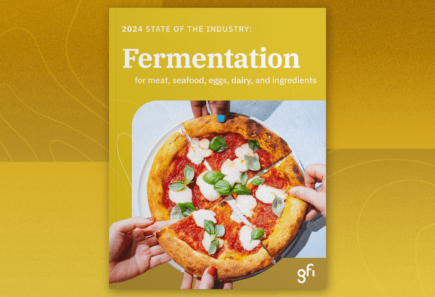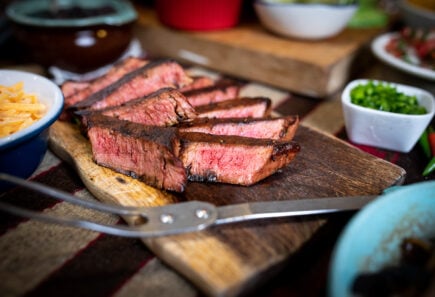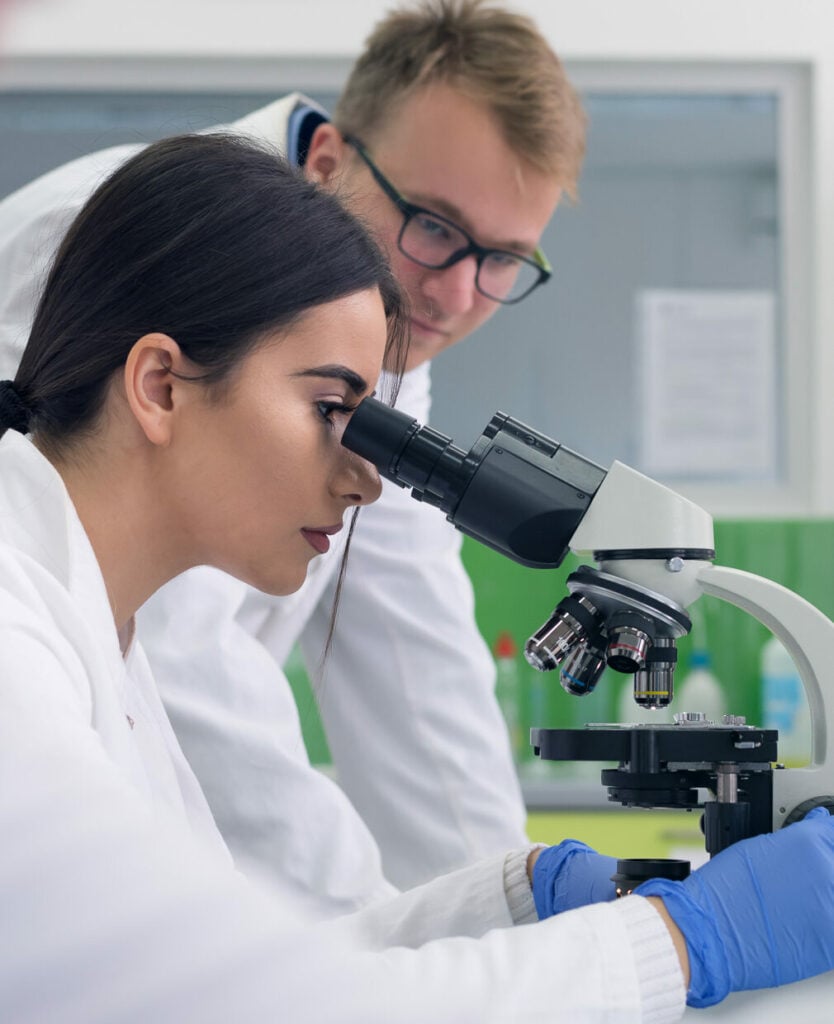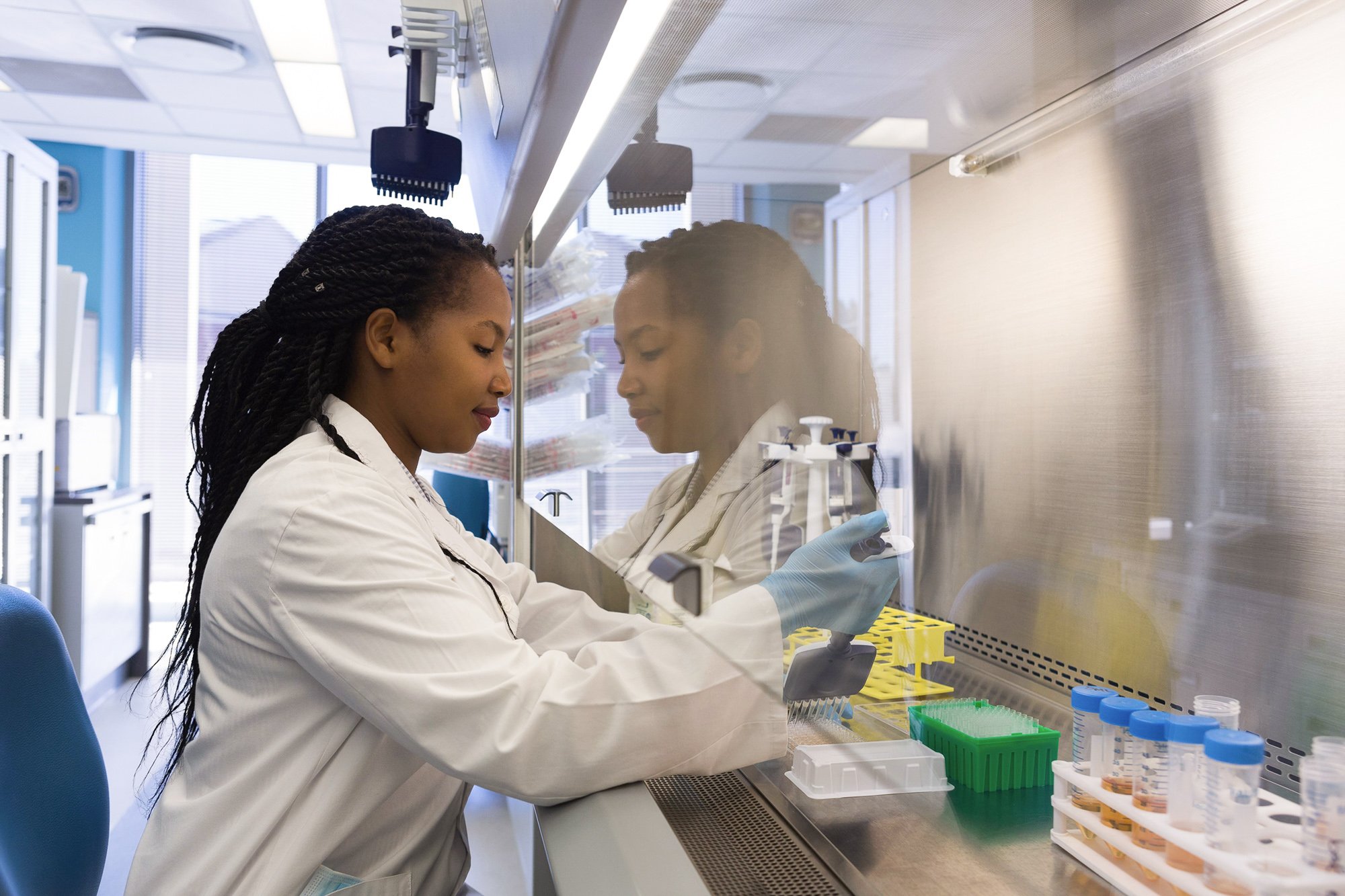Producing animal-like fats through microbial fermentation
Microbial fermentation provides an efficient method for generating lipid molecules that are chemically identical to those produced by animals. Research efforts are needed to expand current knowledge about the process of engineering the appropriate metabolic pathways for the synthesis of animal lipids into microbial organisms well-suited for large-scale fermentation.
-
Fermentation
- Research
- Commercial
- R&D
- Raw Materials, Ingredients, & Inputs
- Target molecule selection
- Host strain development
- Academics
- Startups
- 1 – Inception
Current Challenge
Saturated fatty acids (lauric, myristic, stearic, and palmitic acids) and monounsaturated oleic acid provide animal meat—particularly beef—with its distinctively appealing smell and taste (Daley et al. 2010; Smith et al. 2006). Since these fat molecules are not produced at high quantities in many types of plants, manufacturers that want to include them as ingredients to maximize the flavor of their plant-based products are forced to source them from a limited number of sources like palm or coconut oil, both of which come with sustainability and scalability concerns. An alternative source is microbial fermentation. Natural production and accumulation of lipids by microorganisms during fermentation—often under conditions of limitation of a nutrient such as nitrogen—has been well-described for decades, using naturally oleaginous fungi from genera such as Rhodosporidium, Apiotrichum, Sporidiobolus, and Rhodotorula (Yoon and Rhee 1983; Garay et al. 2016; Probst et al. 2016). Unfortunately, many of these genera do not accumulate lipids at high enough levels for the fermentation to be economically viable. Recently, genetic alterations in Yarrowia resulted in high accumulation of lipids intended for biofuels (Qiao et al. 2015). Other than reports from a handful of small companies—including Nourish Ingredients and Melt&Marble—little research has described the process of optimizing engineered metabolic pathways in yeast for fermentative production of the animal fats described above, especially for food applications. Moreover, the downstream processes for extracting lipids from fermentation biomass often rely on harsh chemical methods using solvents such as hexane, chloroform, or dimethylether (Neto et al. 2019; Catchpole et al. 2010), which are not ideal for food applications.
Proposed solution
To identify the appropriate fat synthesis targets, a survey of the academic and patent literature is first needed to identify the fatty acid profiles that contribute most to the appealing flavor and mouthfeel of different types of animal-based meat. In addition to identifying the types and combinations of fatty acids present in different animal meat types, this survey also will characterize the chemical reactions that take place between fatty acids, sugars, and amino acids during cooking that generates distinctive aroma compounds with low detection limits (Elmore and Mottram 2006). Identifying the chemical processes that result in the aromatic compounds distinctive to animal-based meat will inform choices of fatty acid product targets. Additionally, this survey should include information on the health features of each animal fat molecule, addressing conflicting claims about negative health effects of animal fats (Giovannucci et al. 1994) and proposing solutions based on their chemical structures, inclusion rate, or other functional qualities such as the capacity to act as a solvent for certain vitamins (Webb and O’Neill 2008).
Second, learnings from decades of research on microbial accumulation of lipids for biofuel applications should be mined. This body of research will provide a valuable foundation for determining which fatty acid production pathways are most feasible to build in fermentative microorganisms, thereby elucidating targets with a higher likelihood of success.
On the basis of these findings, microorganisms such as Yarrowia can be engineered with pathway enzymes to generate at least two of the most important fatty acid categories for creating a meaty flavor and aroma (e.g., oleic and stearic acids). In contrast to previous work using Yarrowia to produce biofuel lipids (Wang et al. 2020), a full synthetic biology approach will allow for greater metabolic fine-tuning to generate targeted food lipids. This approach should include identifying the most effective molecular tools for engineering metabolic pathways in Yarrowia, as well as validating the presence and activity of pathway enzymes using a suite of mass spectrometry-based omics techniques (proteomics, metabolomics, lipidomics). These data can be integrated into a flux balance analysis to simulate the effect of the entire metabolic network on the Yarrowia host with respect to metabolite flux rates and metabolic burden that could negatively affect growth (Siddiqui et al. 2012). Moreover, the research should include experimentation with methods to decrease product inhibition of Yarrowia growth when accumulating lipids of various chain lengths. Determining thresholds for growth inhibition will assist in the design of metabolic pathways that resist product inhibition (Xu et al. 2016). In the case of Yarrowia constructs that secrete fatty acids to the fermentation broth, bioprocesses should be assessed that remove lipid products from the broth through novel bioreactor designs (Lemos et al. 2020).
Finally, since scalable downstream methods for the recovery of lipids from fermentation biomass have not been described fully, this research should investigate bioprocess techniques for lipid recovery, de-watering, and stabilization during storage. Food-friendly techniques for preventing lipid oxidation during storage will be of especial interest (Sampaio et al. 2012). Alternative methods to chemical extraction of animal fats from fermentation biomass should be investigated and their feasibility assessed with respect to cost and scalability in commercial manufacturing.
Anticipated impact
Repeated studies have demonstrated that taste and price determine consumer acceptance of new food products. Therefore, as alternative meat products enter mainstream consumer culture, their adoption by consumers will depend in the short term on the degree to which their taste can substitute satisfactorily for animal-based meat. Animal-free animal fats have the potential to add a critical component of a successful taste profile, but they will succeed as a food ingredient only if their inclusion does not inordinately raise the price of the product for the consumer. Therefore, developing a stable, scalable, economical solution for the production of animal fats without animals will be critical as the next generation of plant-based meat products to recruit new consumers. This research will have important implications for determining the molecular tractability of Yarrowia for the production of targeted lipid products, as well as for developing food-friendly methods for lipid extraction and recovery from fermentation biomass.
Related efforts
GFI resources

State of the Industry: Fermentation for meat, seafood, eggs, dairy, and ingredients
This report details the commercial landscape, investments, regulatory developments, and scientific progress in the fermentation for alternative proteins industry.

The science of fermentation
Learn about the emerging role of microbial fermentation in building the next generation of alternative protein products.

Find collaborators
Join the GFIdeas global community of 2,000+ entrepreneurs, scientists, investors, and subject matter experts. Discuss projects on the members-only Slack community, attend monthly seminars, and use the community directory to help you find collaborators working on similar Solutions!
Related solutions
-
Fermentation
Fat production & encapsulation within oleaginous yeast
Oleaginous yeast can convert sugars into fats that impart flavor and mouthfeel to alternative proteins, and they can accumulate lipids within their cell bodies to inhibit oxidation. New research on…
-
Cultivated
Understanding uptake and interconversion of omega-3 fatty acids by cultivated fish cells
Although fish are one of the best dietary sources of long-chain omega-3 fatty acids (FAs), these compounds are mostly bioaccumulated from a fish’s diet rather than synthesized de novo. Consistent…
-
Cultivated
Uptake and biosynthesis of fat in cultivated meat cells
To recapitulate meat’s fat profile, research is required to determine which lipids muscle and fat cells can produce efficiently—and from which precursors—and which lipids they can absorb directly from the…

Explore the full solutions database
Browse 300+ startup ideas, commercial opportunities, research projects, and investment priorities throughout the alternative protein supply chain.
Get involved
If you’d like to fund a research project, work on any of these solutions, share information about related efforts that are already underway, or elevate new ideas for advancing the alternative protein industry, we’d love to hear from you!
